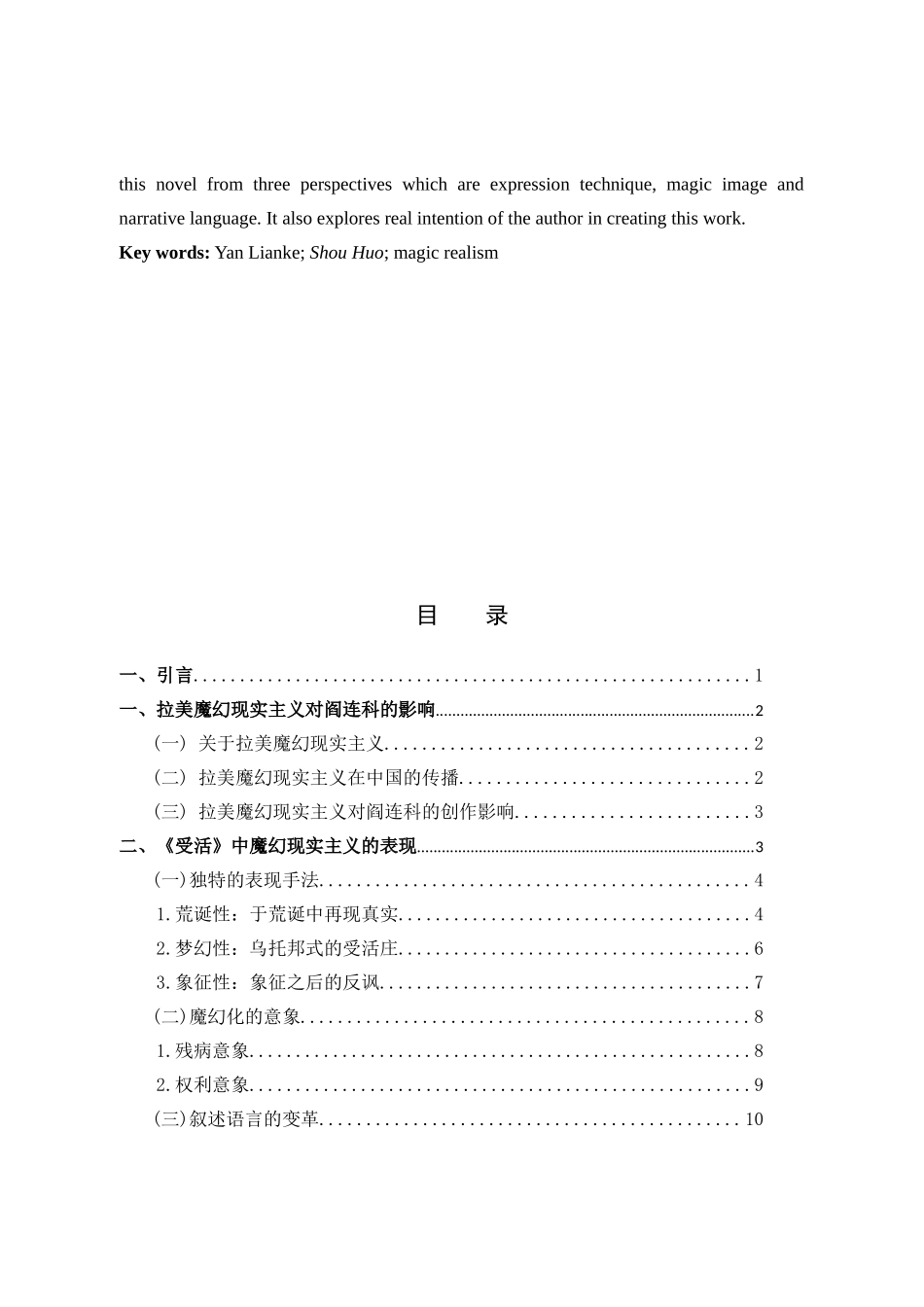摘 要阎连科是中国当代文坛的重要作家,他的众多作品都受到了拉美魔幻现实主义的影响,但他在借鉴拉美魔幻现实主义的同时也对其进行了创新,形成了“中国的魔幻现实主义”。《受活》代表了阎连科魔幻现实主义创作的高峰,小说讲述了乌托邦式的受活庄由入社到退社所经历的沉痛的历史以及县长柳鹰雀的荒诞梦想由“圆梦”到“梦醒”的过程。立足文本分析,从表现手法、魔幻意象、叙述语言三个方面分析作品中的魔幻现实主义特征,并探究作者阎连科在作品背后书写的真实意蕴。 关键词:阎连科;《受活》;魔幻现实主义;AbstractIn Chinese contemporary literary arena, Yan Lianke is an important writer. Lots of his work was influenced by Latin American magic realism, but he also brings forth new ideas while referencing it, forming “Chinese magic realism”.Novel Shou Huo represents the peak of Yan Lianke’s creation of magic realism works. It depicts a painful history of a Utopian town named Shouhuo Zhuang from entering into a society to getting out of it. It also narrates an absurd dream of Liu Yingque, the head of the country, from being achieved to broken up. This article focuses on text analysis. It analyzes features of magic realism of this novel from three perspectives which are expression technique, magic image and narrative language. It also explores real intention of the author in creating this work. Key words: Yan Lianke; Shou Huo; magic realism 目 录一、引言............................................................1一、拉美魔幻现实主义对阎连科的影响.............................................................................2(一) 关于拉美魔幻现实主义.......................................2(二) 拉美魔幻现实主义在中国的传播...............................2(三) 拉美魔幻现实主义对阎连科的创作影响.........................3二、《受活》中魔幻现实主义的表现..................................................................................3(一)独特的表现手法..............


